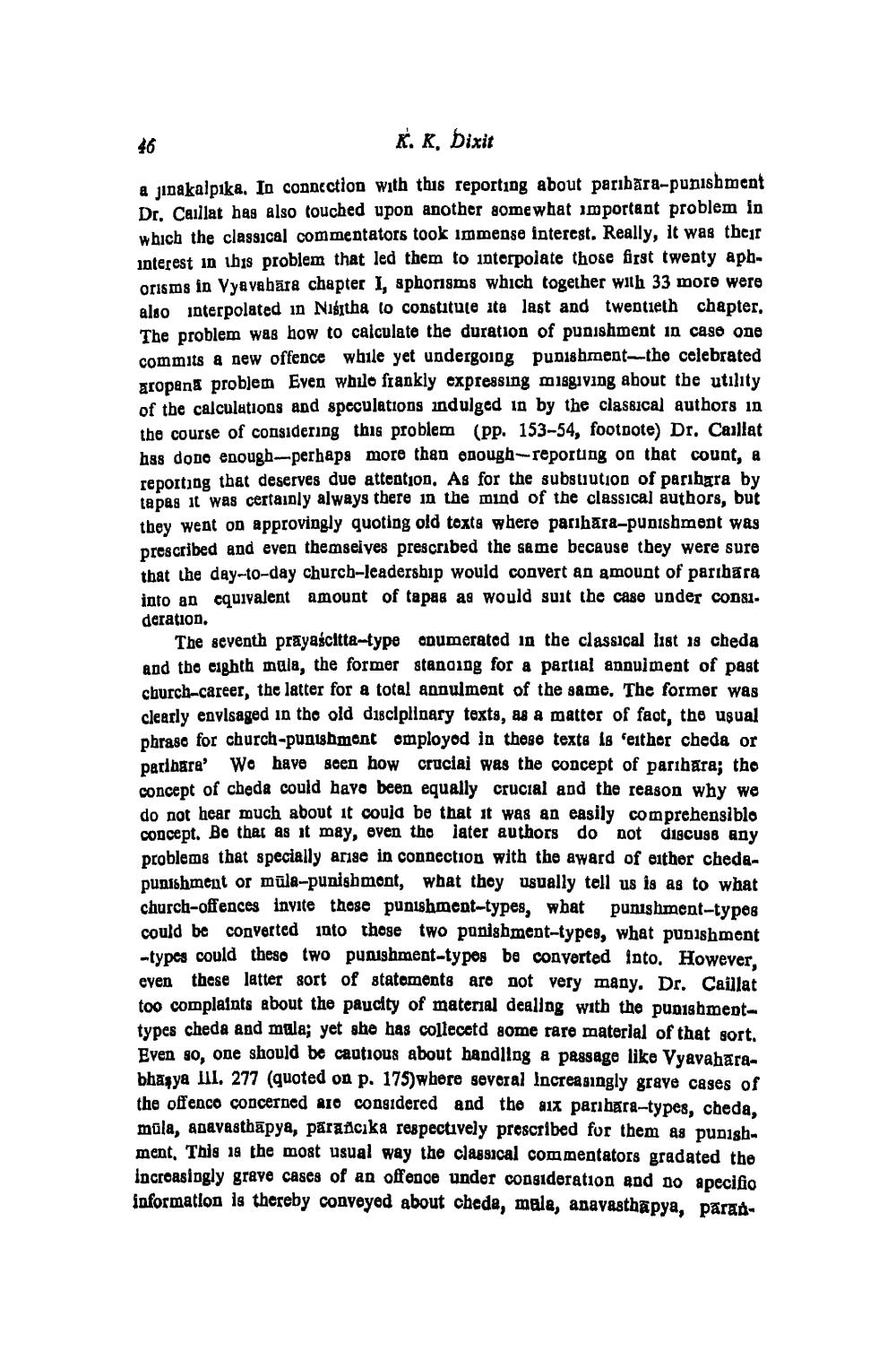________________
46
K. K. Dixit
a jinakalpika. In conncction with this reporting about paribara-punishment Dr. Caillat has also touched upon another somewhat important problem in which the classical commentators took immense interest. Really, it was their interest in this problem that led them to interpolate those first twenty apborisms in Vyavabăra chapter I, aphorisms which together with 33 more were also interpolated in Nišitha lo constitute ata last and twentieth chapter, The problem was how to calculate the duration of punishment in case one commits a new offence while yet undergoing punishment the celebrated aropana problem Even whilo frankly expressing m 18giving about the utility of the calculations and speculations indulged in by the classical authors in the course of considering this problem (pp. 153-54, footnote) Dr. Caillat has done enough-perhaps more than enough-reporting on that count, a reporting that deserves due attention. As for the substution of parihara by tapas it was certainly always there in the mind of the classical authors, but they went on approvingly quoting old toxta where parihara-punishment was prescribed and even themselves prescribed the same because they were sure that the day-to-day churcb-leadership would convert an amount of parihara into an equivalent amount of tapas as would suit the case under con81deration,
The seventh prayascitta-type enumerated in the classical list is cheda and the eighth mula, the former standing for a partial annuiment of past church-career, the latter for a total annulment of the same. The former was clearly envisaged in the old disciplinary texts, as a matter of fact, the usual phrase for church-punishment employod in these texts is either cheda or paribara' Wo have seen how crucial was the concept of paribara; the concept of cheda could have been equally crucial and the reason why we do not hear much about it could be that it was an easily comprehensiblo concept. Bo that as it may, even tho later authors do not discuss any problems that specially arise in connection with the award of either chedapunishment or mula-punishment, what they usually tell us is as to what church-offences invite these punishment-types, what punishment-types could be converted into those two punishment-types, what punishment
types could these two punishment-types be converted into. However, even these latter sort of statements are not very many. Dr. Caillat too complaints about the paucity of material dealing with the punishmenttypes cheda and mula; yet she has collecetd some rare material of that sort. Even so, one should be cautious about handling a passage like Vyavahara. bhasya III, 277 (quoted on p. 175)where several increasingly grave cases of the offenco concerned and considered and the aux parihara-types, cheda, mula, apavasthapya, pärancıka respectively prescribed for them as punishment. This is the most usual way the classical commentators gradated the increasingly grave cases of an offence under consideration and no apecific information is thereby conveyed about cheda, mala, anayasthapya, paran




